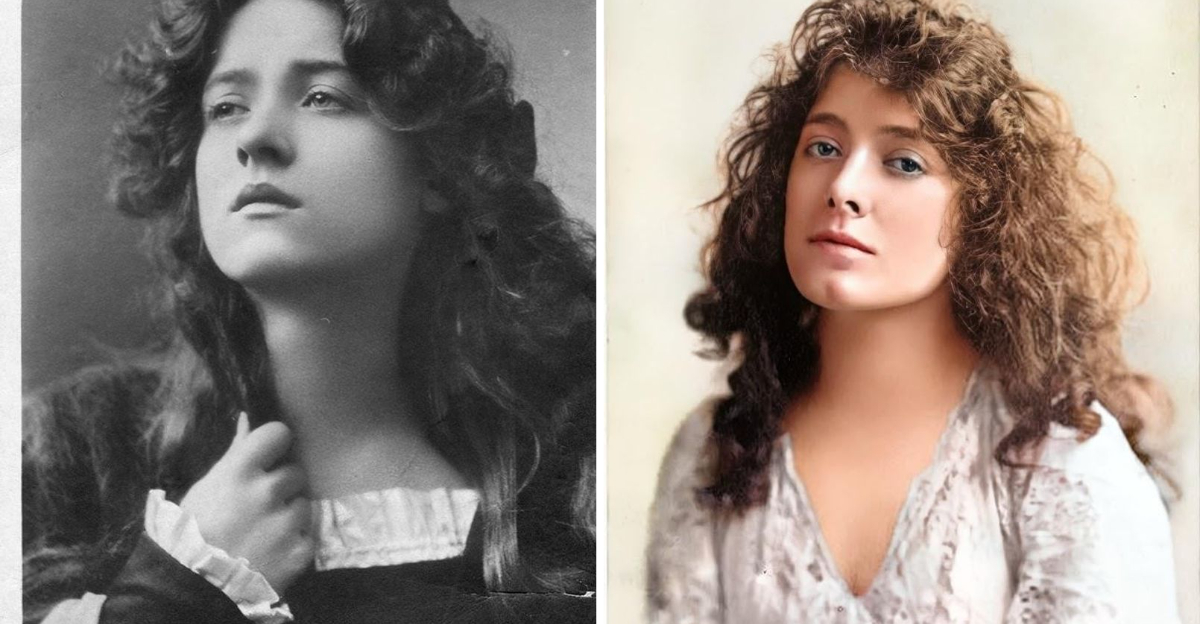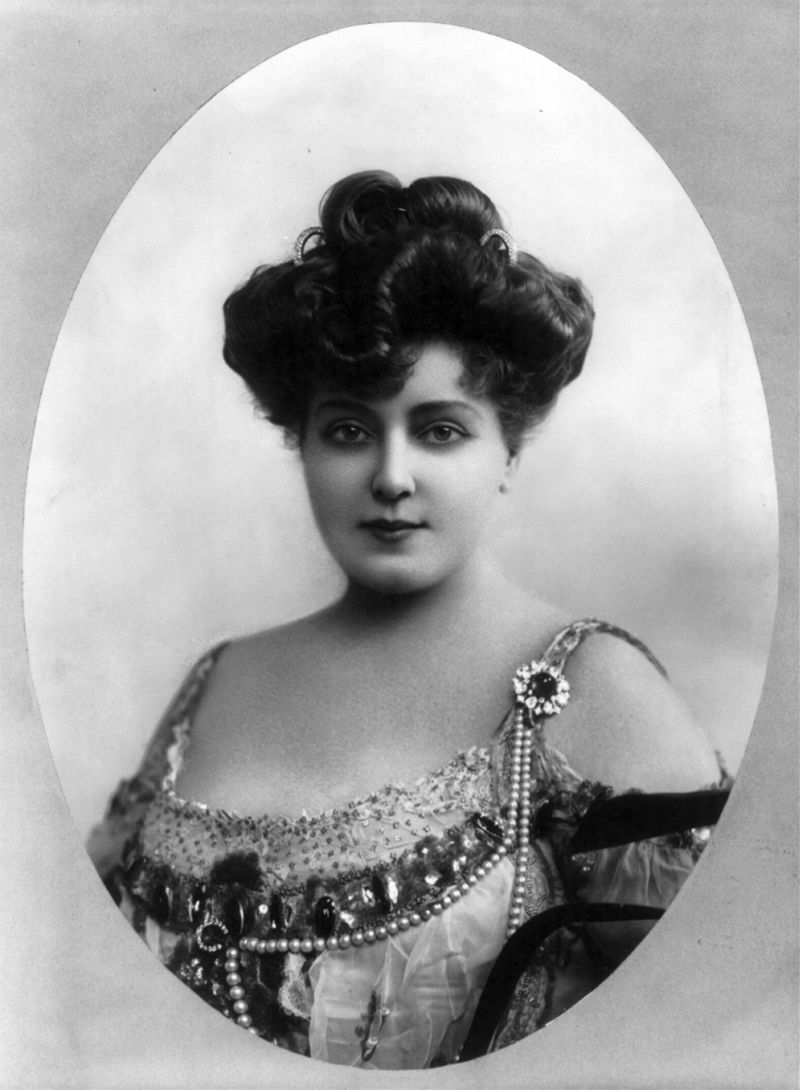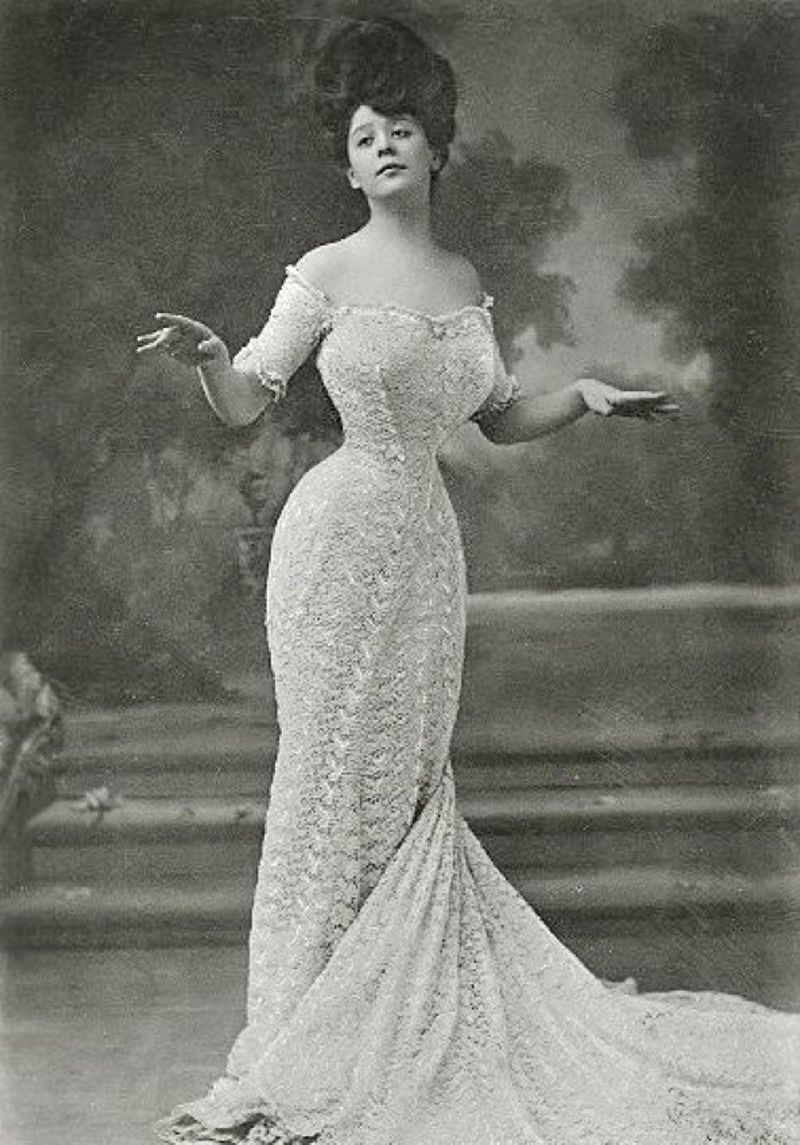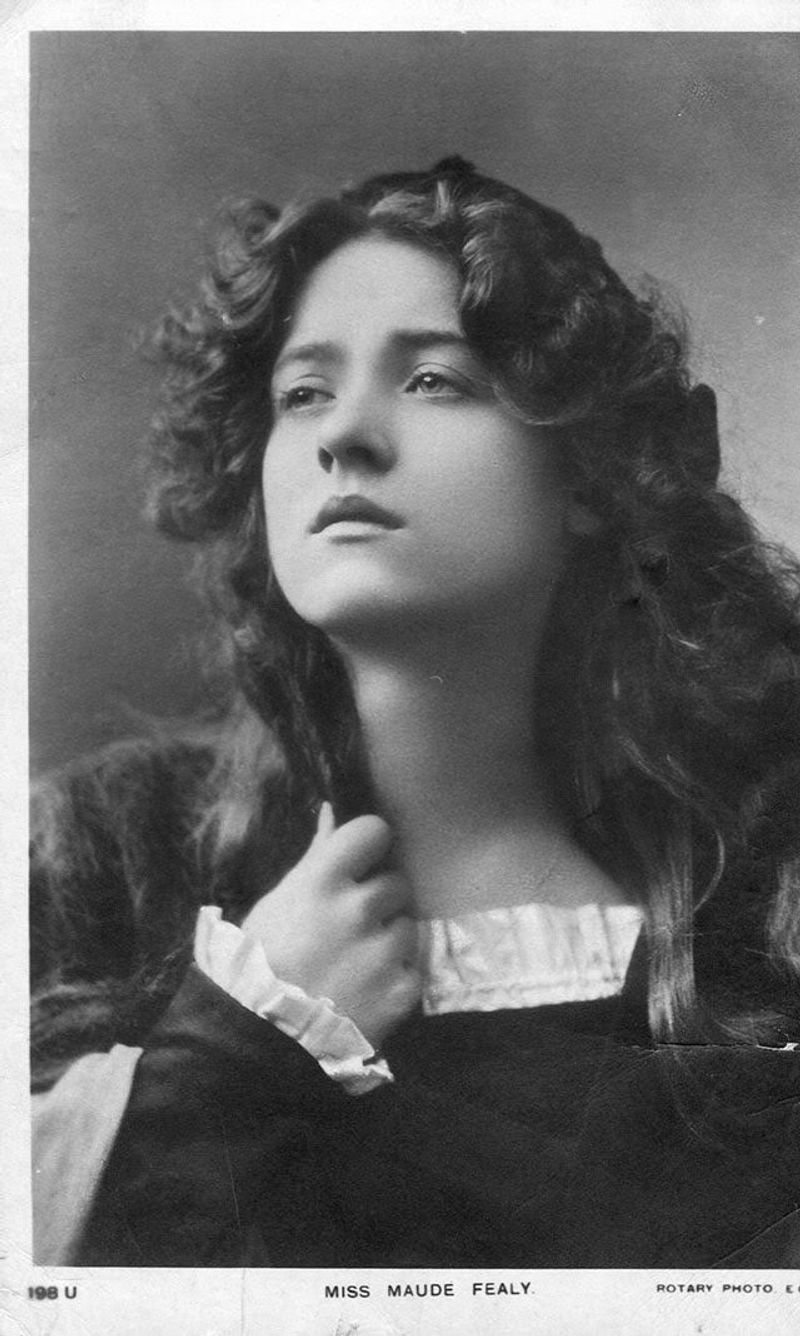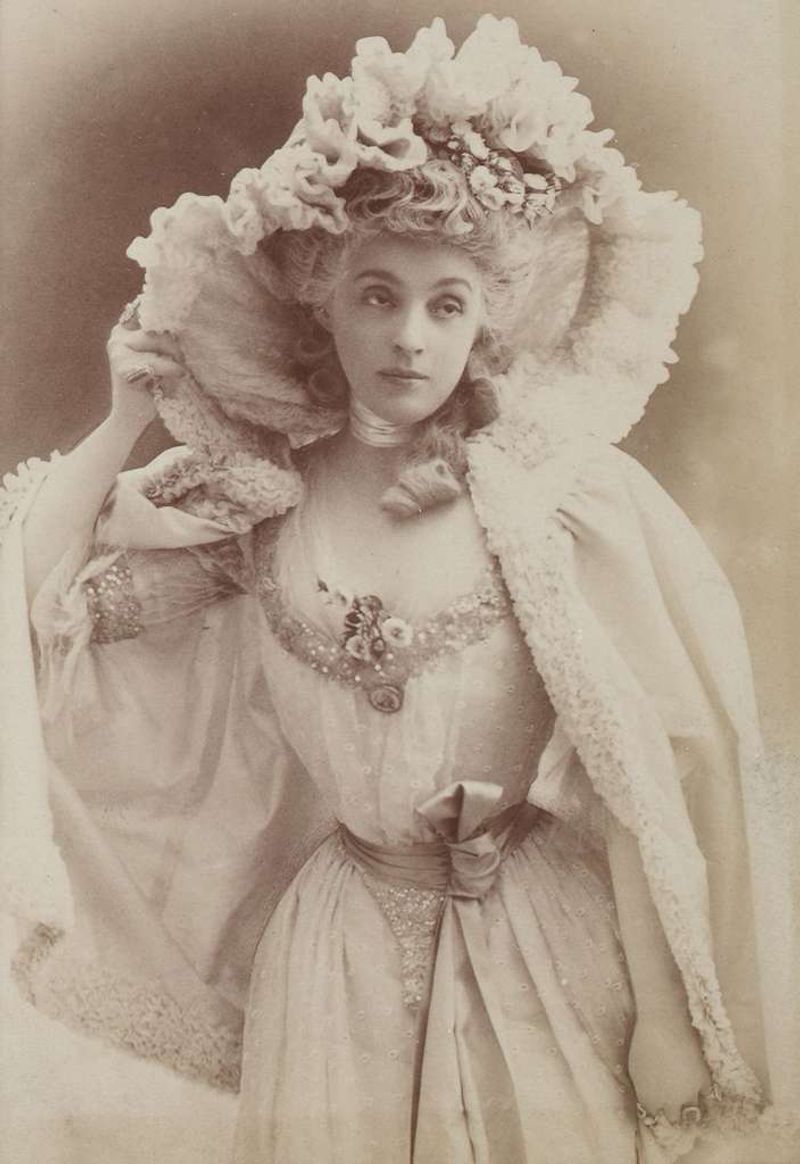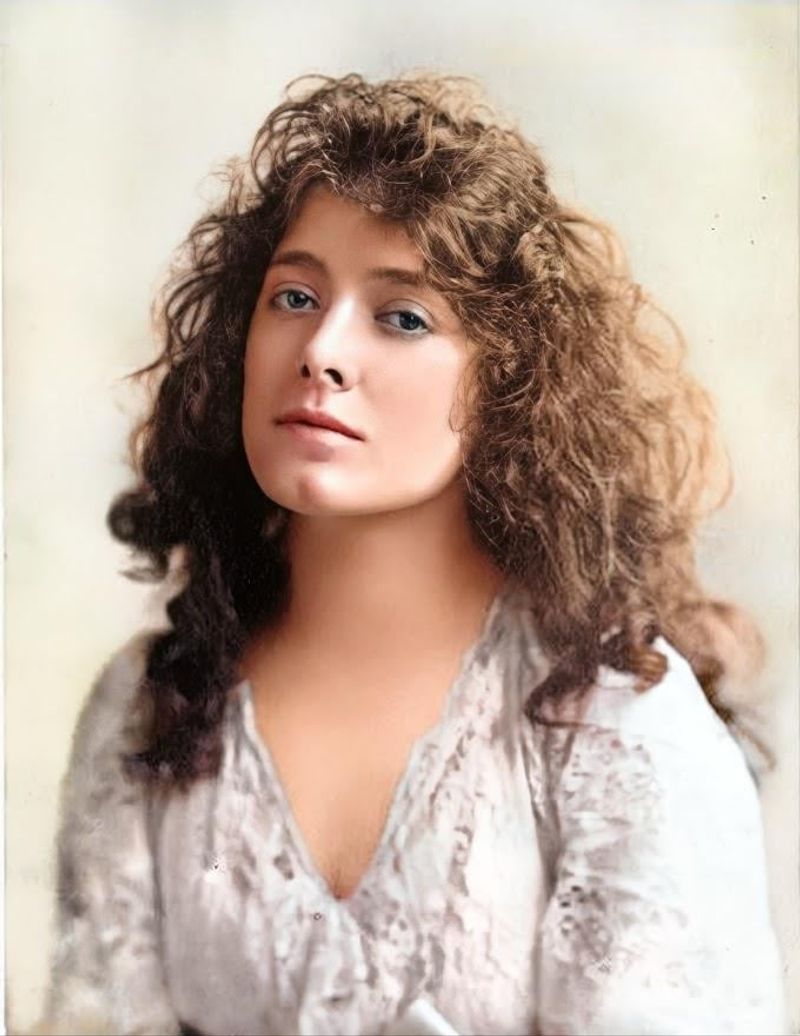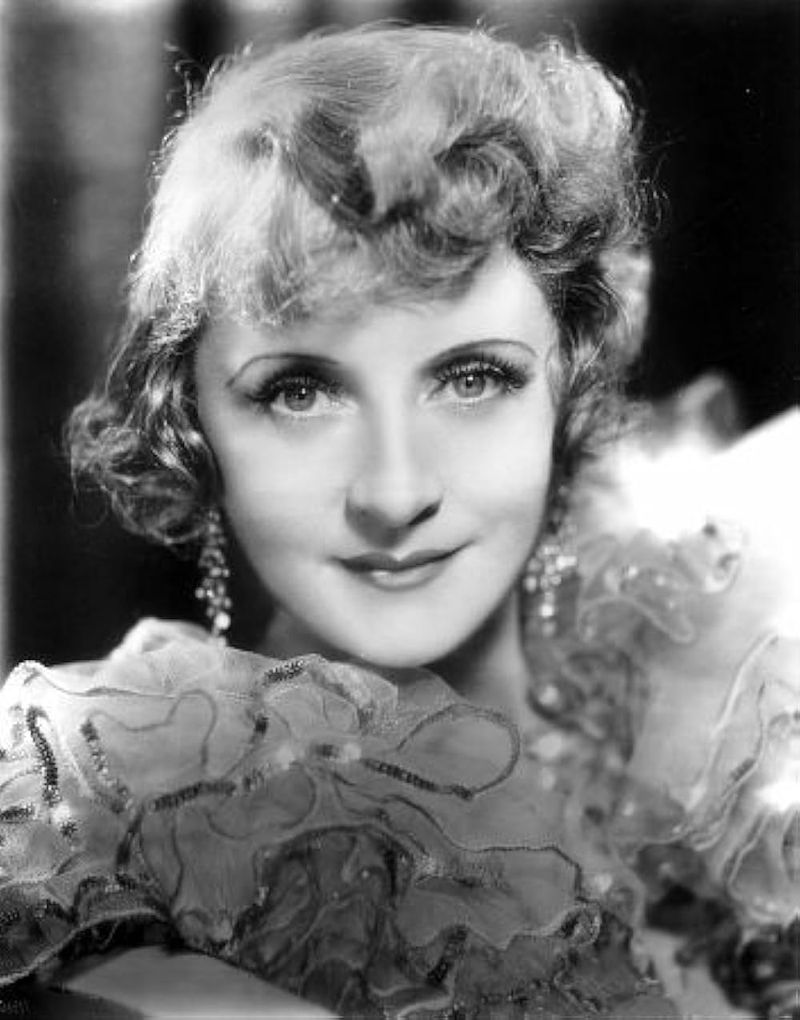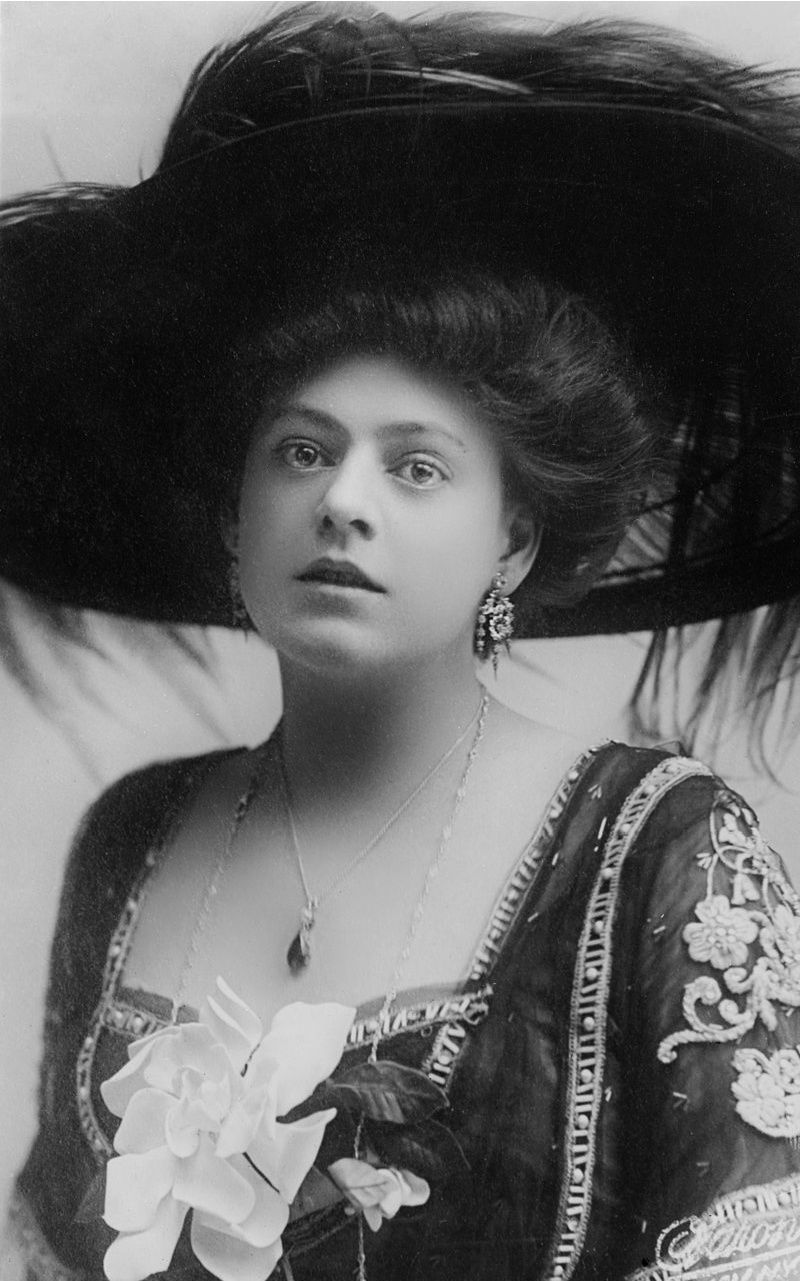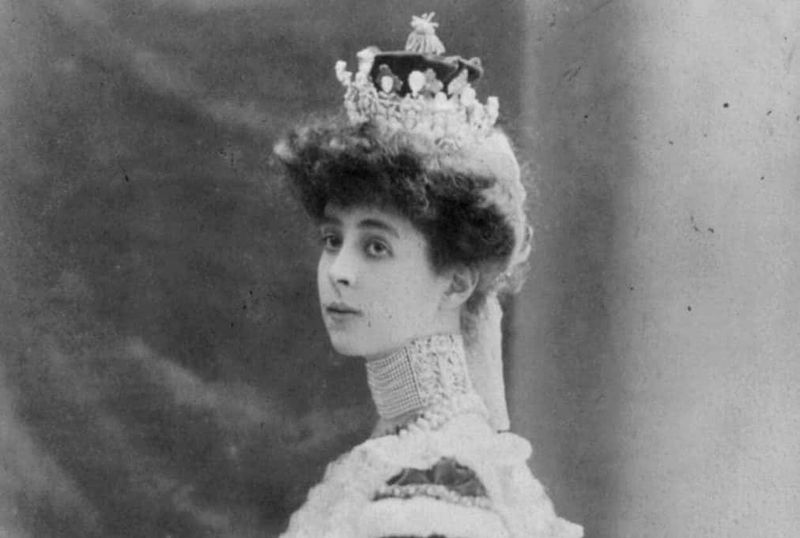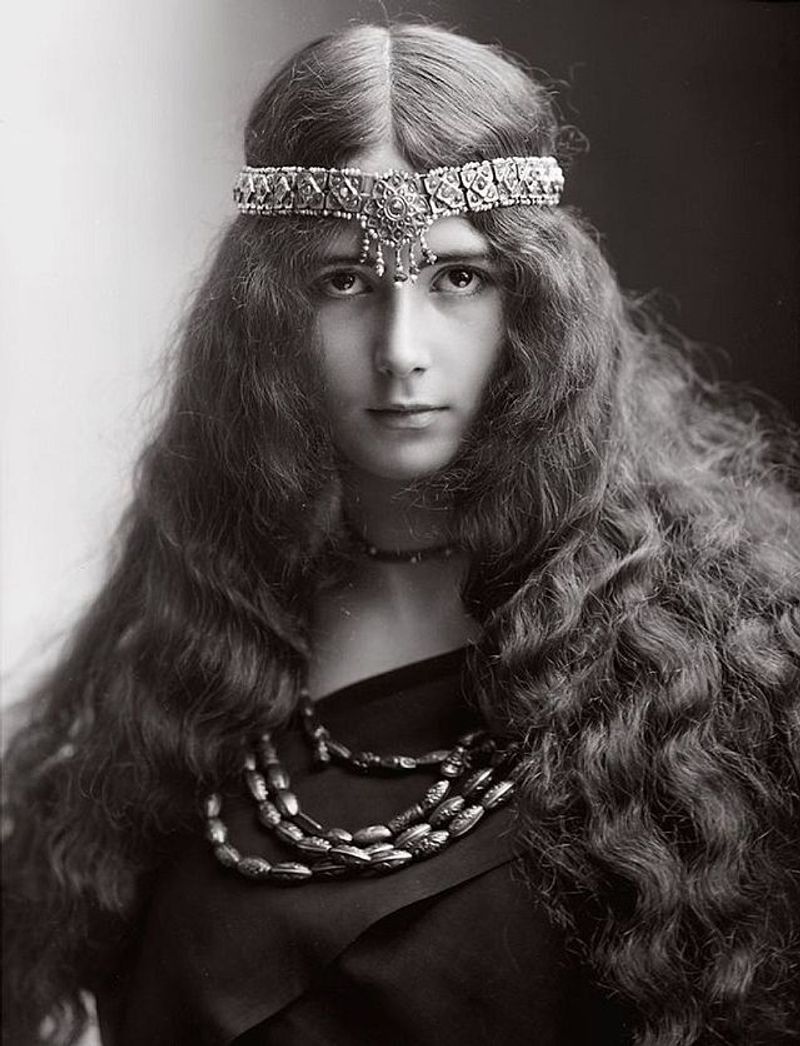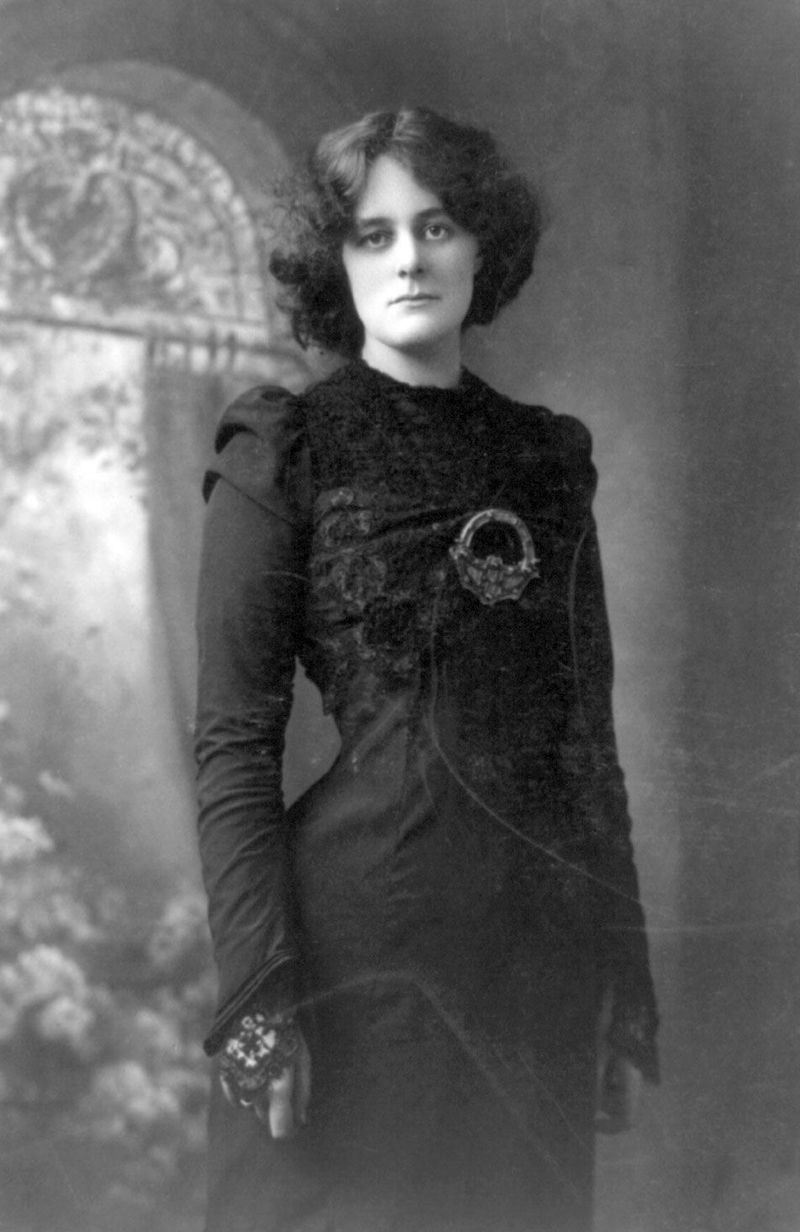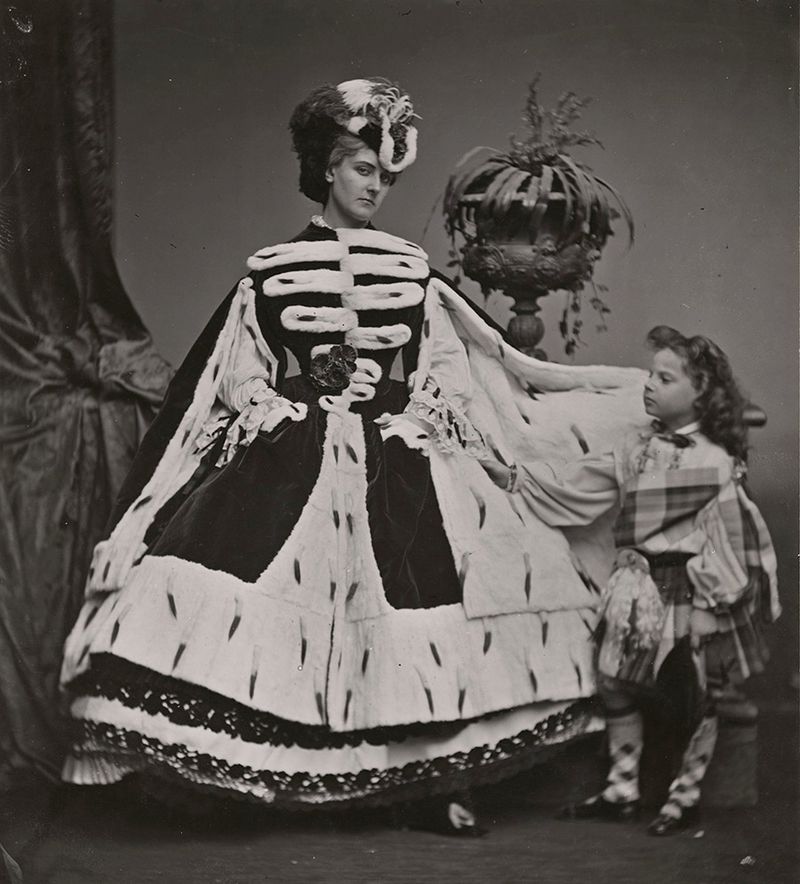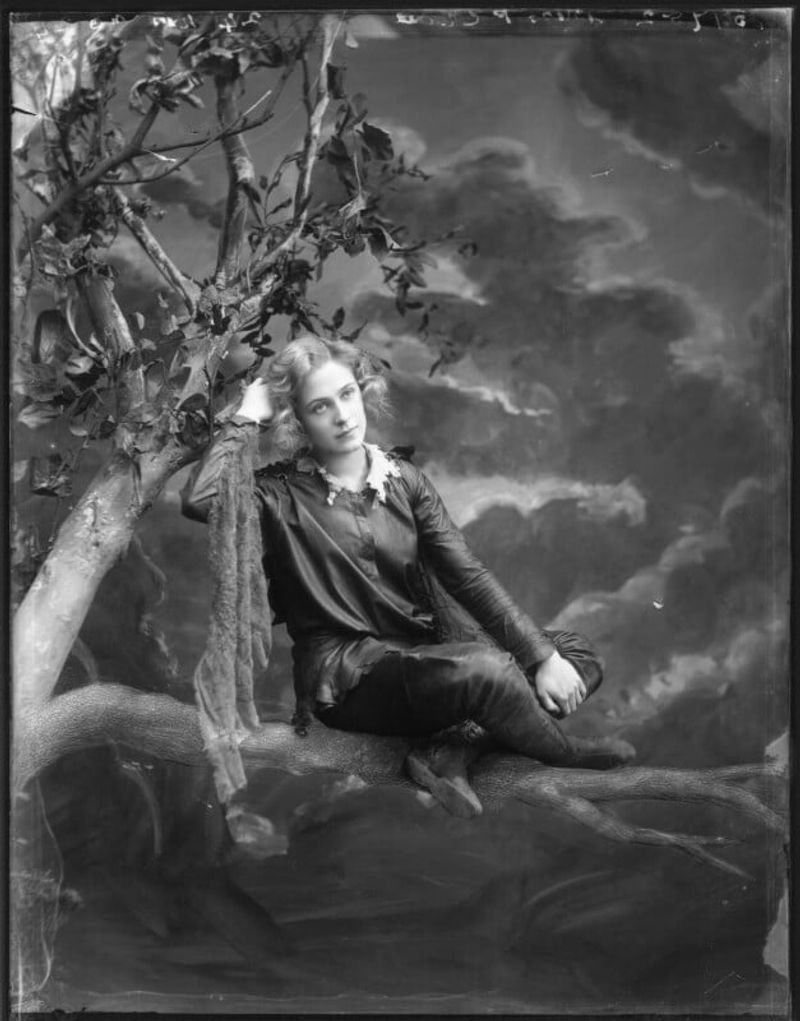At the dawn of the 20th century, certain women captivated the world with their extraordinary beauty and presence. These legendary figures defined the standards of beauty for their era through photographs, paintings, and stage performances. Their faces graced postcards, inspired artists, and set fashion trends that rippled across continents.
1. The American Venus: Lillian Russell
Crowned America’s reigning beauty queen during the Gilded Age, Lillian Russell dazzled audiences with her hourglass figure and golden voice. Theater-goers flocked to her performances, mesmerized by her combination of vocal talent and stunning appearance.
Diamond Jim Brady, her famous admirer, showered her with jewels that highlighted her luminous complexion. Despite weighing nearly 200 pounds at her peak, Russell epitomized the voluptuous ideal of her time when curves were celebrated rather than concealed.
2. The Original It Girl: Evelyn Nesbit
Before the term existed, Evelyn Nesbit was America’s first supermodel. Her delicate features and copper hair captivated artists, most notably Charles Dana Gibson, who immortalized her as the definitive Gibson Girl.
At just sixteen, she became New York’s most photographed woman, her face appearing on everything from magazine covers to cigarette cards. Her tragic involvement in the “Crime of the Century” – when her husband killed her former lover – only increased her notoriety and cemented her place in the pantheon of legendary beauties.
3. Divine Sarah: The Eternal Actress
Sarah Bernhardt refused to fade gracefully. Already in her fifties by 1900, the French tragedienne maintained her reputation as a great beauty through sheer force of personality and theatrical genius.
Her slender frame and expressive eyes allowed her to play youthful roles well into her seventies. Eccentric and magnetic, Bernhardt slept in a coffin to “understand tragedy” and kept a menagerie of exotic pets including a cheetah.
Photographers captured her distinctive profile that adorned everything from perfume bottles to Art Nouveau posters by Alphonse Mucha.
4. The Ultimate Gibson Girl: Camille Clifford
Belgian-born Camille Clifford won a magazine beauty contest that launched her to international fame. Her impossibly tiny 18-inch corseted waist and dramatic S-curve silhouette perfectly embodied the Gibson Girl ideal that dominated beauty standards.
Photographers captured her signature pose – hand on hip, chest thrust forward, chin held high. She performed in London music halls where audiences marveled less at her singing abilities than her physical embodiment of the era’s impossible beauty standard.
Her hourglass figure represented the pinnacle of Edwardian beauty ideals.
5. The Milk Bath Queen: Anna Held
With enormous dark eyes that seemed to take up half her face, Polish-born Anna Held captured the imagination of American audiences. Her husband, showman Florenz Ziegfeld, created elaborate publicity stunts claiming she bathed daily in milk to maintain her famously soft skin.
Newspapers eagerly reported on her 18-inch waist and beauty regimens. Her coquettish stage persona featured her signature move – batting her enormous eyes at the audience.
Though her beauty routine claims were largely fabrication, they established the modern connection between celebrities and beauty products.
6. The Classical Beauty: Maude Fealy
Maude Fealy possessed the kind of timeless beauty that would have been at home in any era. Her perfectly symmetrical features and luminous eyes made her a favorite subject for postcard photographers who captured her in various romantic poses.
Unlike many contemporaries who relied on dramatic makeup or extreme corseting, Fealy’s appeal came from her natural, almost modern-looking beauty. Her thick brown hair, often worn loosely around her shoulders, framed a face that seemed almost too perfect to be real.
She appeared in early silent films where her expressive face needed no words.
7. The Expressive Enchantress: Gabrielle Réjane
French actress Gabrielle Réjane possessed a different kind of beauty – one that came alive through expression and movement. Though not conventionally perfect, her vibrant personality and extraordinary talent made her mesmerizing on stage.
Toulouse-Lautrec captured her dynamic presence in his portraits, showing a face that could transform from comedy to tragedy in an instant. Her large, expressive eyes and mobile features allowed her to portray a range of emotions that captivated audiences.
She represented the shift from static, posed beauty to the more dynamic, personality-driven appeal of modern celebrities.
8. The Shakespearean Stunner: Julia Marlowe
Julia Marlowe brought Shakespeare’s heroines to life with her luminous presence and melodious voice. Her striking features – particularly her large, soulful eyes – photographed beautifully in the theatrical portraits that made her famous.
Critics often struggled to focus on her acting because her physical beauty was so distracting. Her skin had a translucent quality that seemed to glow under stage lights.
Unlike many contemporaries who relied on elaborate costumes and makeup, Marlowe’s natural beauty shone through even when playing tragic roles like Juliet or Ophelia, making her the ideal Shakespearean leading lady.
9. The Eternal Glinda: Billie Burke
Long before she donned the glittering crown of Glinda the Good Witch, Billie Burke enchanted Edwardian audiences with her strawberry-blonde curls and effervescent personality. Her heart-shaped face and delicate features made her the embodiment of youthful feminine charm.
Burke’s beauty had a distinctly American quality – fresh, optimistic, and approachable. Her slightly upturned nose and natural smile gave her a perpetually cheerful appearance that photographers loved to capture.
Married to Florenz Ziegfeld, the man who defined American beauty through his famous Follies, Burke herself became an icon of wholesome appeal.
10. Theatre Royalty: Ethel Barrymore
With her regal bearing and aristocratic features, Ethel Barrymore epitomized refined beauty at the turn of the century. The founder of America’s greatest theatrical dynasty possessed a distinctive angular jawline and penetrating gaze that commanded attention both on stage and in photographs.
Unlike the more delicate beauties of her era, Barrymore’s appeal was intellectual and commanding. Her strong features photographed beautifully in profile, creating iconic images that adorned theater programs and postcards.
When she delivered her famous catchphrase “That’s all there is, there isn’t any more,” audiences were as captivated by her presence as her words.
11. The Dollar Princess: Consuelo Vanderbilt
Celebrated for her swan-like neck and regal bearing, American heiress Consuelo Vanderbilt embodied aristocratic beauty. Forced into marriage with the Duke of Marlborough, her stunning looks became the talk of two continents.
Artist John Singer Sargent captured her melancholy beauty in portraits that highlighted her most famous feature – an extraordinarily long, elegant neck. Her dark hair, usually pulled into a simple chignon, emphasized her graceful profile and perfect posture.
Society photographers documented her transition from American heiress to English duchess, creating images that defined Gilded Age beauty standards.
12. The Ballet Trendsetter: Cléo de Mérode
French dancer Cléo de Mérode sparked an international hairstyle revolution with her distinctive center-parted hair covering her ears – a style that became known as “à la Mérode.” As the most photographed woman of 1900, her image appeared on countless postcards and cigarette cards.
Her perfect oval face and delicate features made her a favorite subject for early photographers and sculptors alike. Though rumors linked her romantically to King Leopold II of Belgium, she maintained her reputation as an accomplished dancer.
Her unique hairstyle concealed slightly protruding ears, proving that even historic beauties had insecurities.
13. The Revolutionary Muse: Maud Gonne
Standing nearly six feet tall with flowing red-gold hair, Irish revolutionary Maud Gonne commanded attention wherever she went. Poet W.B. Yeats fell hopelessly in love with her, writing dozens of poems comparing her to Helen of Troy.
Her striking height and passionate political convictions made her beauty seem almost mythological to contemporaries. Photographs show a woman of unusual presence – statuesque, intense, and unwilling to conform to demure feminine standards of the era.
Her unconventional beauty inspired not just poetry but political action, as she used her commanding presence to advance Irish independence.
14. The Photography Pioneer: Countess di Castiglione
Though she died in 1899, Virginia Oldoini, Countess di Castiglione, created a revolutionary legacy that influenced beauty in 1900 and beyond. This Italian noblewoman collaborated with photographer Pierre-Louis Pierson to create over 400 portraits that documented her beauty.
Unlike passive models, she controlled every aspect of her images – costumes, poses, and settings. She recreated historical scenes and fantasies decades before fashion photography existed.
Her obsession with preserving her legendary beauty (she covered all mirrors in her home as she aged) created an unprecedented photographic record of a 19th-century beauty icon.
15. The Ethereal Performer: Pauline Chase
American actress Pauline Chase captured hearts with her boyish, ethereal beauty that made her the perfect Peter Pan on Broadway in 1905. Her delicate features and slender frame allowed her to convincingly portray the boy who wouldn’t grow up.
Unlike the voluptuous ideals of earlier decades, Chase represented the emerging modern beauty standard – more athletic, youthful, and androgynous. Photographs show her elfin quality that entranced audiences on both sides of the Atlantic.
King Edward VII became so enchanted with her performances that she was invited to give private shows at Buckingham Palace, cementing her status as a beauty icon.
